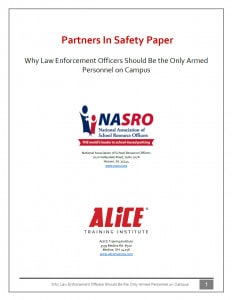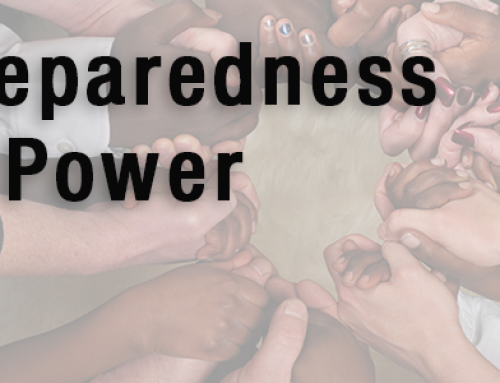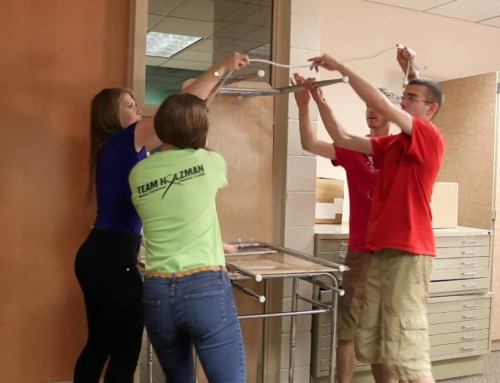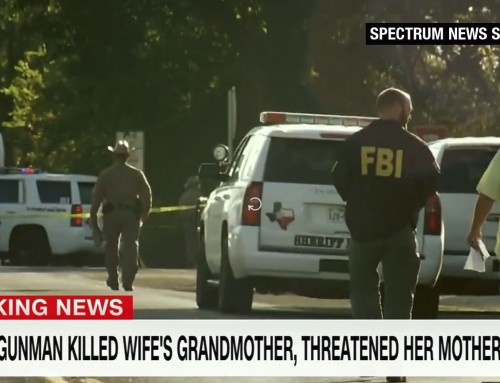This is not a political statement. It is a reflection of both the facts and the reality of citizens being tasked with engaging in a firearm response during a highly friendly-occupied school shooting event.
Facts of the Situation
Most citizen firearm training will teach that the only time a weapon should be produced in any situation, let alone a K12 campus event, is during some form of a Violent Critical Incident where lethal force is, or is probably about to be, justified. This “bright line” requires a complete understanding of the law, as well as a correct interpretation of the event. Neither of these criteria are able to be covered in depth in a regular Concealed Handgun License (CHL) class, or even the sort of mini-academies some states are requiring their carrying educators to successfully complete. And with virtually no real need to ever pull a weapon until the real event, little hands-on experience of shoot/no-shoot decision making will be afforded the citizen turned armed response personnel. Police officers will pull their weapon hundreds of times in their careers with most never taking a shot. Citizens will not be afforded that real-life practice. And without it, hesitation is a real prospect.
Most citizens’ highest level of handgun training will reach the level of Self-Defense. This means they are prepared to pull their weapon when suddenly confronted by an aggressor using some amount of force. This puts them in second place immediately. Second place is not the place to be in a close-contact and immediate gunfight. Police officers will unholster and even pull and point their weapon long before a trigger pull is necessary. Police officers will have experience and intuition from numerous dangerous encounters. Very few citizens will be able to pull from that experience. Some will have prior military or law enforcement experience, but not the majority.
Also, training to the level of Self-Defense does not afford the CHL holder the opportunity to practice the tactics, movement and engagement strategies from an offensive perspective. For example, a teacher is in his classroom when a shots-fired call in the cafeteria comes out. What does he do? Does he remain in their classroom with the ability to defend the occupants, or does he leave the classroom and proceed to the cafeteria? Does he move with the gun at the low ready position or remain concealed? Obviously, citizens running down the hallway will cause some level of response from any police responder whether they are a known person or not to the police. Is it also obvious that he should not enter a hostile area while holstered. When should he transition? As the armed citizen arrives in the cafeteria, does he shout verbal commands or just begin shooting at the person pointing a gun but not firing? Is the person holding the gun the actual shooter, or a parent who was having lunch with his/her child and has disarmed the shooter? Police officers include these types of scenarios in their training on a regular basis. Will armed citizens be afforded this type of mental practice on a regular basis? Without regular and realistic training, we cannot be surprised when hesitation and mistakes happen. In this environment, mistakes can result in deadly consequences.
Another fact of the situation is that virtually every gunfight has a winner and loser. Somehow the notion that the armed good guy will always beat the armed bad guy has been adopted as reality. Sadly, it is not true. We lose numerous police officers every year in armed encounters. I assure you they were the good guy in the fight. Bad stuff happens. And just like downed officers’ guns have been used by bad guys to further carnage, the same could happen in a school shooting event should an armed citizen be disarmed by the bad guy.
Reality of the Moment
Fear. Stress. Distractions. Confusion. These are just some of the mental inputs that the armed citizen will have to overcome not just to make good shoot/no-shoot decisions, but also to successfully mentally and physically move through the process of shooting accurately; the process from target identification to trigger squeeze. Impediments anywhere in the mental and physical process means hit rates go down, at least on the intended target. And whether the event occurs in a hallway, classroom, library, cafeteria, office or gym (all of which have already occurred) there will always be friendlies in that area that cannot become collateral damage. The US Department of Justice regularly reports on police shooting accuracy in deadly force encounters. Annually, that number is around the 30% hit rate. A terrible number, but understandable given the stress of the moment. We would not expect an armed citizen to perform much better. What will the 70% of misses be hitting?
In these environments, accuracy must be ensured. Does this armed citizen know exactly how close they must be to have a 100% hit rate? Doubtful, because even in highly stressed induced training we could not have replicated the real thing. From my experience, high stress training misses still occur at very close distances. We are probably talking about near contact shots to ensure 100% accuracy. Will armed citizen responders do that? How will they get into that position without making themselves an easier target? These questions do not have universal answers and will probably only be answered during the event. Not the best time.
Where are these armed folks located? Will they be where we need them when we need them? Ron Borsch’s (SEALE Academy) research of these events reveals an average murder attempts per minute of 4.7/minute. With hit rates by the shooters of over 50%, and a 1:1 ratio of killed to wounded, the armed citizen responder would not have to be too far away in the building for their presence to have little impact in the outcome. This does not even address how quickly they will be a aware that there is even an event on-going.
It is for these reasons that I believe relying on an armed response by an onsite civilian is not providing our citizens with all the safety and survival options they need to prevail in these events. It does not take a good guy with a gun to defeat a bad guy with a gun. The President Reagan assassination attempt video shows that even when armed, professionals may not use their weapon given the dynamics and circumstances of the event. Yet that event was stopped in 3 seconds without a return shot fired. How? By taking advantage of overwhelming numbers – just using body weight and gravity.
And these benefits have been readily available in every school shooting to date. Are we teaching the building occupants what these tactical advantages are and how to use them? Or are we telling them to wait for someone with a gun to get there? A person who may not possess the experience and skill necessary to help them.
Training individuals to participate in their own survival through proactive response strategies is a more effective approach than relying on armed citizen responders.






